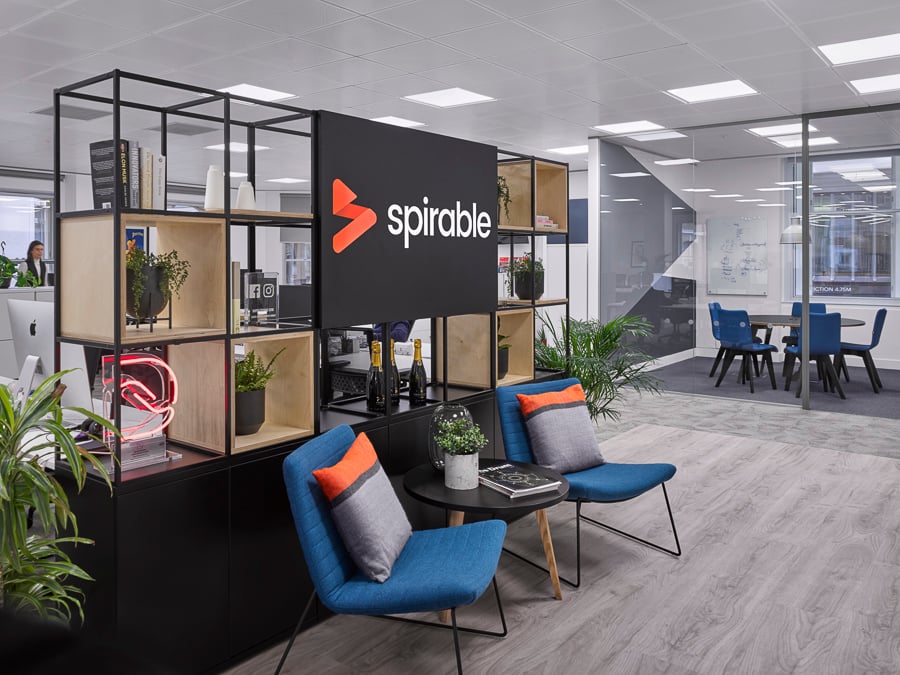The post-pandemic demand for greater flexibility and a more agile approach to work has created a number of different workspace options for businesses to consider.
Many are now favouring open, collaborative spaces over desk numbers to suit new working habits, and the office as we once knew it has evolved.
Managed offices are providing businesses with the opportunity to rethink their workplace strategies with a number of benefits suited to the changing needs of the workforce.
In this blog, we break down the basics of managed spaces and what those benefits are.
What is a managed office?
A managed office allows businesses to create a bespoke space that suits their team in a flexible lease, with the day-to-day management of facilities and supplies taken care of by a third party operator.
As a workspace solution, it combines the privacy of a conventional lease with the more agile term lengths of a serviced office. It’s a blank canvas that can be tailored to suit any type of business.
Managed office tenants will pay a fixed monthly price, which will also include a range of services such as cleaning, kitchen supplies and wi-fi as well as any other pre-agreed add-ons.
What is the difference between a managed office and a serviced office?
Although managed and serviced offices are often grouped together under the ‘flexible working’ umbrella, there are some key differences to consider when comparing the two workspace options.
Management does operate in a similar way in both types of spaces, but while serviced offices are shared with other companies, already fitted out and only available in select locations, managed solutions are private, bespoke and can operate in any building once agreed with the landlord.
Both options come with their perks, as well as their limitations. For most businesses, it really just depends on what suits their team, and whether the space is the right fit (and fit-out!) for the stage they’re at.
What are the benefits of a managed office?
Bespoke design
Managed offices are like a blank canvas. They provide a space for businesses to get creative, and cultivate a working environment that fosters creativity, culture and a sense of belonging.
A managed solution grants tenants more control over their own workspace, with allowances made for changes to the design and layout of the space. Whether it’s their name on the wall, collaboration zones or even an outdoor social area, they’ll have the option to leave their company’s imprint on the space.
Exclusivity
Managed solutions are often an option for businesses that have previously occupied a shared serviced office, largely due to the need for privacy.
This is one of the key benefits for companies still seeking a flexible workspace solution, but wanting their own front door. The privacy means that tenants won’t need to share facilities with other businesses, or worry about interruptions throughout the day.
Tech-enabled
Businesses occupying a managed office will usually have a tech-enabled experience supported by the operator. Commonly, this will be an app that allows tenants to manage their space via their phone.
This not only helps the third party operator quickly address any issues the tenant may have, it also streamlines the day-to-day office use for teams in the office. The tech will usually support tasks such as door access, booking meeting rooms, ordering supplies or reporting any problems that need fixing.

Flexibility
Working with the workspace operator, businesses will be able to negotiate the lease for a managed office that suits their requirements and circumstances.
Unlike traditional solutions, managed offices can be paired with leases as short as one year, which may suit agile businesses scaling up or scaling down. The flexibility also means tenants can commit to longer terms, but more commonly the leases vary from 18 months to three years.
Space management
In a managed office, you don’t need to worry about the coffee running out or the cleaning. All of the facilities are taken care of by the operator, which suits businesses without any office management function in-house.
Additionally, regular or ad hoc needs - such as food and drink deliveries or celebrations - can also be looked after by the operator.
Low to no upfront costs
One of the notable benefits of a managed solution is the low upfront CAPEX (Capital Expenditure) required by the occupier. Firstly, deposits are more manageable than they are in traditional leases, usually requiring 2 months rent as opposed to a full year in some cases.
Secondly, upfront fit-out costs are kept to a minimum in a managed office. Businesses can spread the costs for things like furniture over the course of their tenancy as it will be included in the monthly price, meaning there will be no surprise payments for the finance team to manage.
A simplified process
The office search is often time consuming and the process fragmented. Opting for a managed solution simplifies the tenant experience, which can be a huge benefit to businesses short on resources and time.
At Kitt, we work with businesses to define what they want to achieve from their space, and support them all the way from finding an office through to thriving in it.
This means that the whole journey is taken care of. From organising viewings to designing and fitting out a bespoke space, everything is covered by us to help make the tenant experience as hassle-free as possible.

